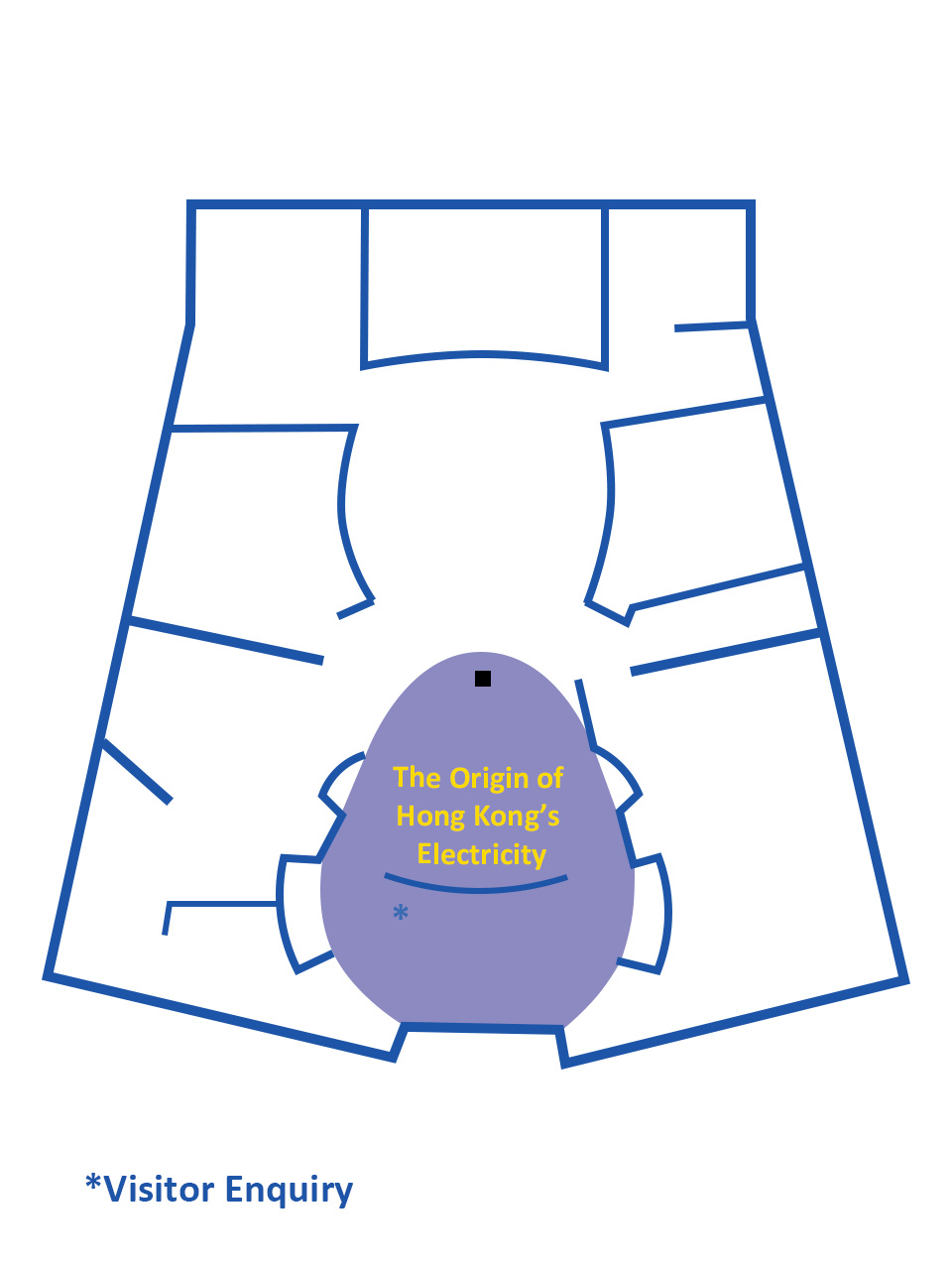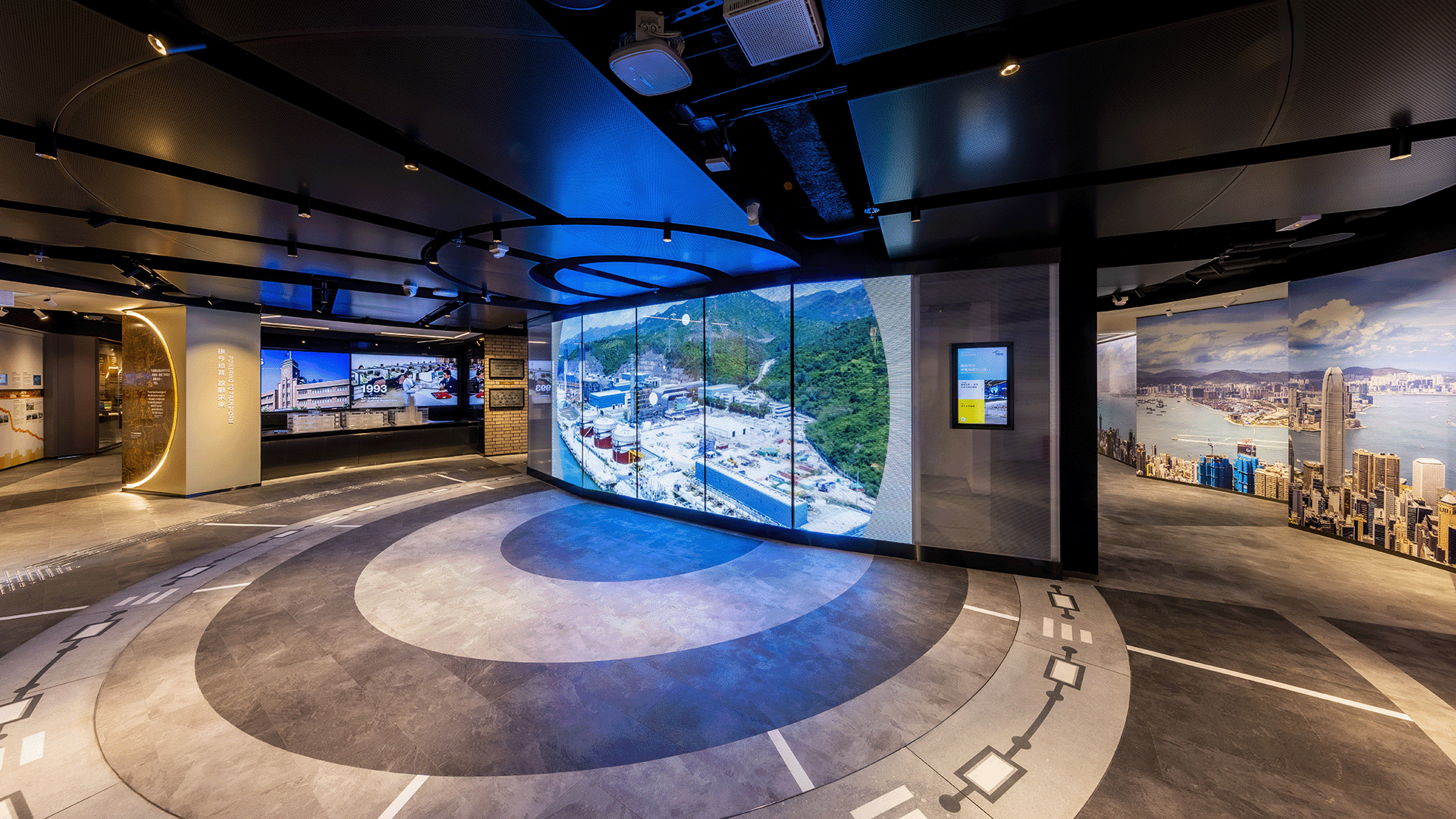The Origin of Hong Kong's Electricity
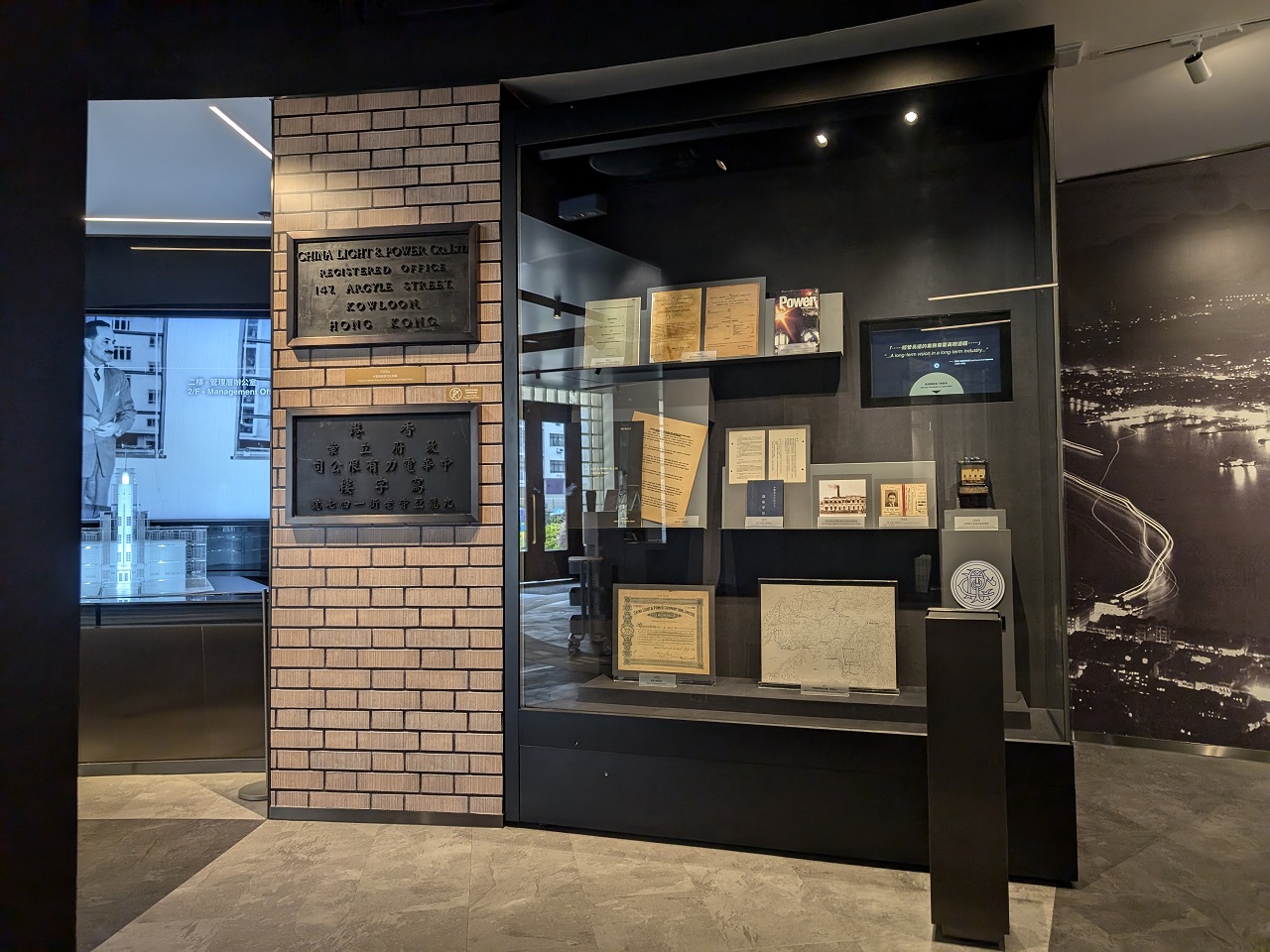
1. 【Historic Artefacts of CLP】
The display cases and wall plaques in front of you contain artefacts related to the origins and development of CLP.
China Light and Power Company Syndicate was incorporated in Hong Kong in 1901 and has supported the city’s social and economic development ever since. In the display case to your right is a photograph of CLP’s first power plant in Shameen, Guangzhou, along with a 1941 map of the transmission network in Kowloon and the New Territories, early electric meters, and other mementos from years gone by.
To your left are two historic metal plaques from CLP’s former headquarters, which were originally on the walls near the main entrance. When CLP moved out of the clock tower building in 2012, the plaques were conserved and brought here for everyone to see.
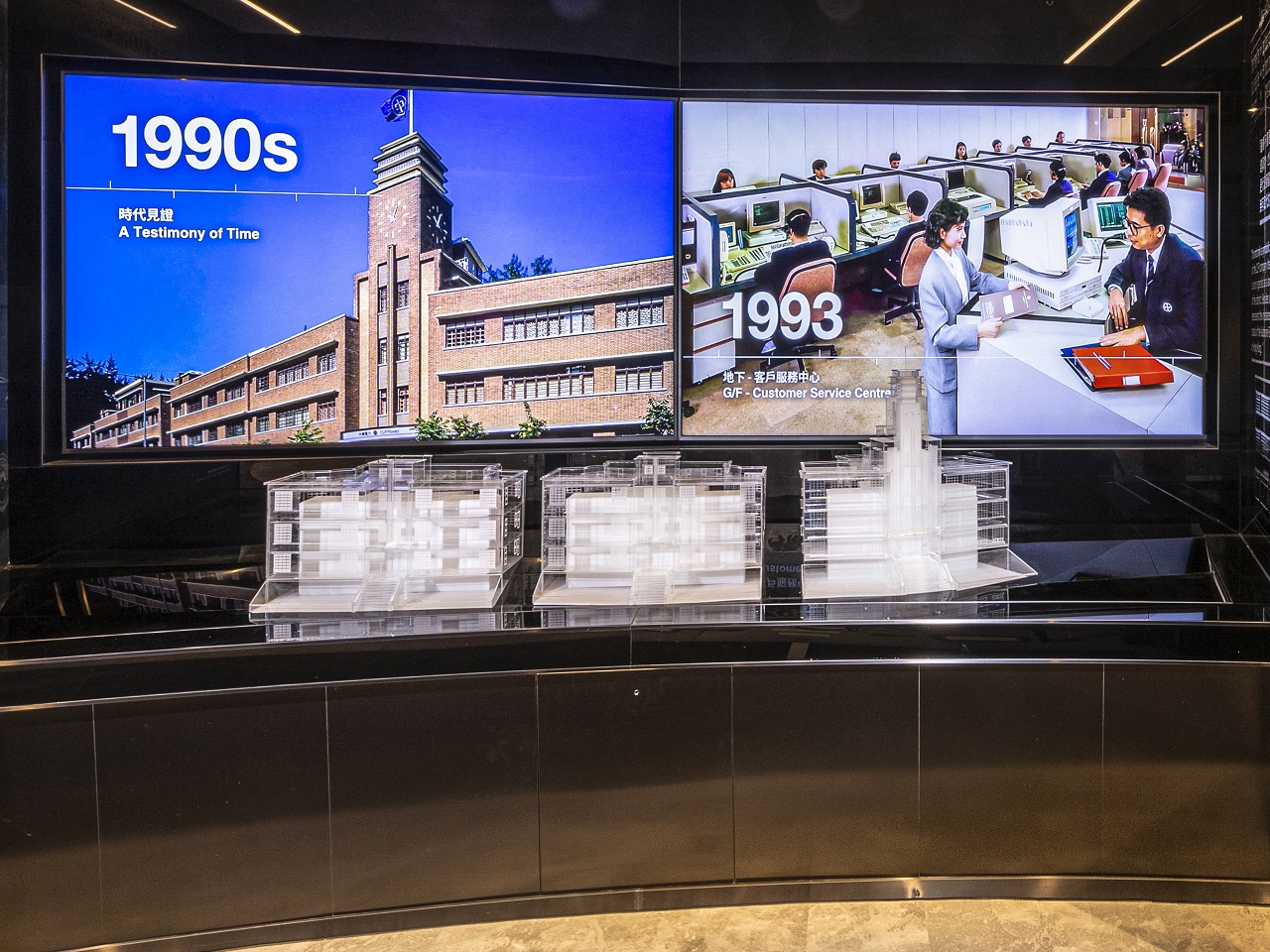
2. 【The CLP Clock Tower】
The CLP Clock Tower was completed in 1940. It was originally called the CLP Administrative Building and served as the company’s headquarters. The model in front of you shows the complex consisting of the CLP Clock Tower and the two elegant residential blocks adjacent to it, St. George’s Mansions.
As CLP’s business grew rapidly in the 1960s, the headquarters ran out of space and expanded from the clock tower into St. George’s Mansions. The complex remained CLP’s headquarters until 2012 when the company relocated to a new site in Hung Hom.
The imposing red brick complex with Kadoorie Hill as its backdrop was designed by a Chinese architect Kwan Wing-hong. It was created at the peak of the Art Deco movement, and the design incorporated modernist architectural styles that emerged in Europe after World War I, blending simplicity, symmetry, and geometric lines. The exterior walls are covered in reddish-brown glaze tapestry tiles, giving the entire complex a brown-red appearance. The striking design has received widespread acclaim.
The CLP Clock Tower is three storeys tall, reaching a height of 25 meters, with 2.4-metre-wide electric clocks set into three of its exterior tower walls. Many residents relied on the clock tower to tell the time in the days before wrist watches were common, making it a part of the community’s collective memory of daily life.
The CLP Clock Tower was listed a Grade 1 historic building by the Antiquities and Monuments Office in 2018. After its renovation was complete, it was opened to the public with free admission, promoting history, culture, green education, and sustainable development.
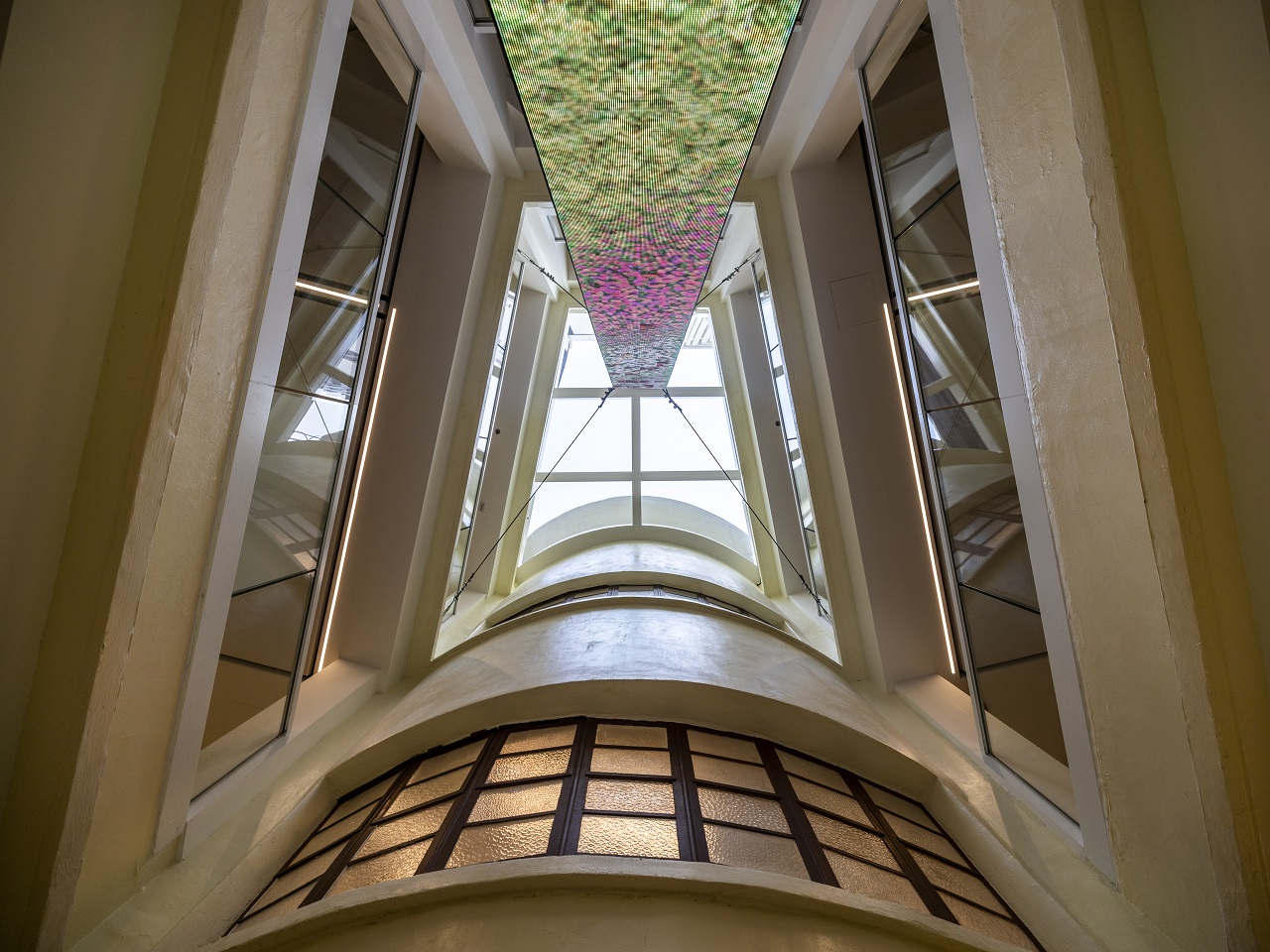
3. 【The Original Atrium】
The atrium is bright and flooded with natural light, reflecting the original design of the CLP Clock Tower when it was built in the 1940s. It was created primarily to provide ventilation and natural light. In later years, the atrium was covered and converted to additional floor area for office use. When the clock tower was renovated, the panels used to cover it were removed, restoring the atrium to its original splendour and allowing daylight to stream into the exhibition area.
The curved walls beneath the skylight of the atrium have retained their original appearance. During the renovation, only the paintwork was refreshed. The iron window frames, handles, and stained glass were preserved to keep the character of the atrium intact.
A cylindrical electronic screen called Power Glass has been placed in the atrium to symbolise sustainable development. During festivals or special occasions, the display is changed to show animations with seasonal themes. The addition of Power Glass beneath the atrium skylight indicates the blending of innovative technology with historic architecture, combining the old with the new and connecting the past to the present. This in turn mirror the mission of CLP Pulse to promote history and culture while moving towards a green future, summed up by the museum’s motto: ‘Treasure the past, seize the future.’
